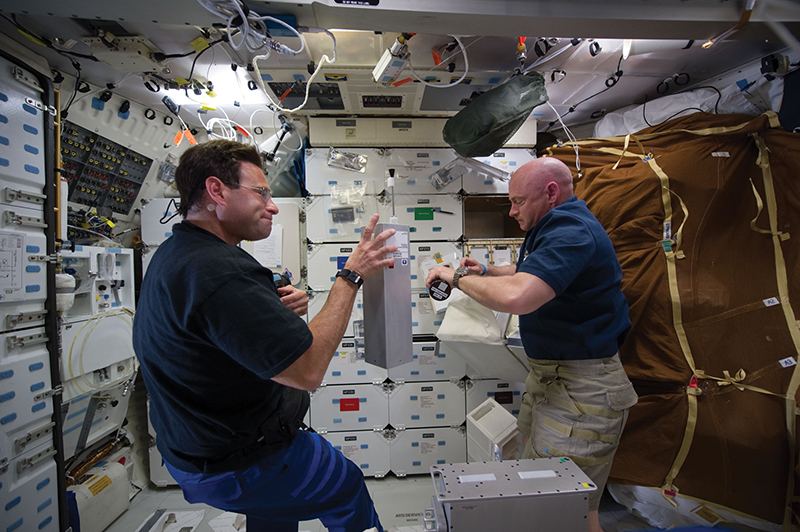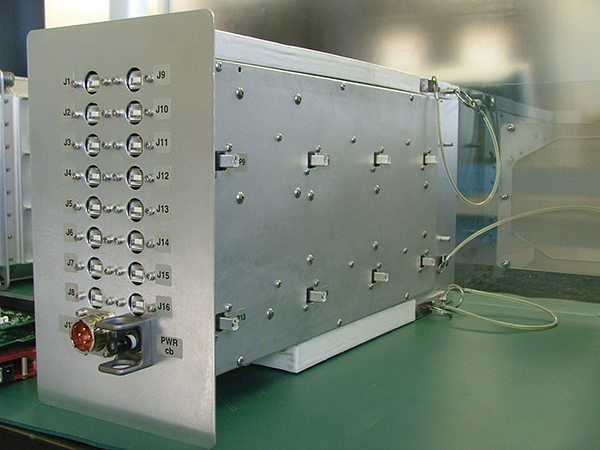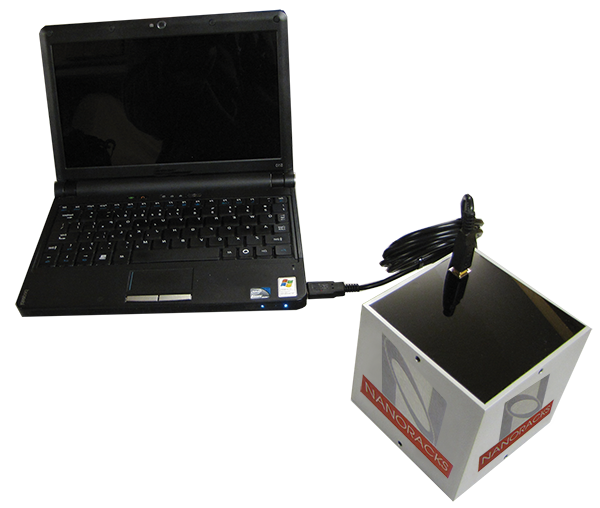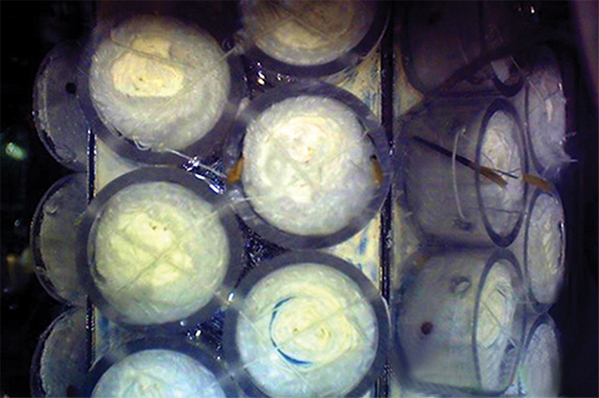
Commercial Platforms Allow Affordable Space Research
NASA Technology
At an altitude of about 240 miles, its orbital path carries it over 90 percent of the Earth’s population. It circles the Earth in continuous free fall; its crew of six and one Robonaut pass the days—experiencing 16 sunrises and 16 sunsets every 24 hours—in microgravity, an environment in which everything from bodily functions to the physical behavior of materials changes drastically from what is common on the ground. Outside its shielded confines, temperatures cycle from one extreme to the other, radiation is rampant, and atomic oxygen corrodes everything it touches.
A unique feat of engineering, the International Space Station (ISS) also represents the most remarkable platform for scientific research ever devised.
In 2005, anticipating the space station’s potential for NASA and non-NASA scientists alike, the NASA Authorization Act designated the US segment of the ISS as a national laboratory, instructing the Agency to “increase the utilization of the ISS by other Federal entities and the private sector.” With the ISS set to maintain operations through at least 2020, the station offers an unprecedented long-term access to space conditions, enabling research not previously possible.
“There will be new drug discoveries, new pharmaceuticals, a better understanding of how we affect the planet and how we can maintain it,” says Marybeth Edeen, the ISS National Laboratory manager, based at Johnson Space Center. The ISS, she says, represents a major example of the government’s role in making such advancements possible. “The government is key in that researchers cannot afford to build the kind of infrastructure that the government can provide. But we then have to make that infrastructure available at a reasonable cost.”
Enter Jeff Manber, who saw in the ISS National Lab an extraordinary opportunity to advance science, education, and business in ways never before seen.
Technology Transfer
A veteran commercial space businessman who previously headed MirCorp, which leased the Mir space station for two years, Manber co-founded NanoRacks LLC of Houston, Texas, and approached NASA with an idea for a partnership that would transform the way space-based research is conducted.
“We said, ‘We want to put our own research platforms on the ISS and market them to customers, and we’ll pay for it,” Manber says. He and his co-founders, all industry veterans, envisioned a partnership in which NanoRacks would provide the research hardware and the customers, and NASA would act as a kind of landlord and regulator, providing the necessary comprehensive safety checks and access to the ISS and its crew. The key, says Manber, was that NanoRacks would fund the entire effort as a commercial venture, incurring no additional costs to NASA or the Nation’s taxpayers. NASA and NanoRacks soon formalized the partnership through a Space Act Agreement.
To realize its vision, NanoRacks had to devise a research platform that could be utilized by a broad range of researchers, for a broad range of experiment concepts. Considering the many challenges—the conditions of the space environment; the limited, carefully managed resources onboard the ISS (including crewmember time); the breadth of research topics for which the National Lab could be used; and the significant costs of launching, maintaining, and sometimes returning research payloads—this was no simple task.
The ISS already featured standardized lockers and drawers intended to remove custom research hardware from the equation, allowing scientists to focus on their experiments instead. NanoRacks built on that concept, finding a solution in the increasingly popular CubeSat model and creating a plug-and-play research platform both standardized in size and versatile in function. CubeSats are nanosatellites of a specific, small size that have been employed largely by universities as an affordable means of space research. NanoRacks used the cubesat form factor to create NanoLabs, four-inch cubes with a USB port for drawing power from the ISS and transmitting near real-time data gathered from the contained experiment. Individual experiments can operate within a single NanoLab, or multiple NanoLabs can be used in varying configurations for larger research setups.
“All the ISS crewmember has to do is attach the NanoLab to our platform using the USB, and immediately power from the station flows into the experiment, and data can transmit from the station down to the customer,” says Manber.
Within 6 months of the Space Act Agreement, NanoRacks launched two research platforms—with space for a total of 32 NanoLabs—that became operational on the ISS in August 2010.
Benefits
NanoRacks has since flown the experiments of 15 customers, with over 60 total payloads currently under contract. Its customers range from high schools to universities to pharmaceutical research organizations around the globe.
“Researchers have believed, since the dawn of the space age, that removal of gravity will allow us to better understand complex processes and maybe even develop new materials. We’ve never had the opportunity we have today to test that belief,” says Manber. Because of the small size and standardized format of the NanoLab cubes, NanoRacks’ customers can design experiments for that platform instead of having to devise their own hardware, which can be a costly and time-consuming venture. With the ability to fly to the ISS on any of the station’s resupply vehicles, including those of commercial providers such as SpaceX, NanoRacks is averaging under a year from contract signing to launch. The typical active research time is 30 days. All of this represents a game-changing development, a vast improvement over the days of expensive, custom-built research payloads that would have to wait years for an opportunity to fly on the Space Shuttle and years after to test again.
“NanoRacks has put the barrier to spaceflight research low enough to give people a chance to fail,” says Edeen. “That sounds bad, but in reality what we’re saying is that it is cheap enough where you can try something, and if it doesn’t work, you can try something else.”
By 2013, NanoRacks expects to have three research platforms on the ISS, in addition to a plate reader (used to perform sample analyses), two already operational microscopes, and a centrifuge developed by Astrium Space Transportation. The Astrium collaboration is one example of how the NanoRacks approach to ISS research is spawning new partnerships and technologies.
“We have other companies designing circuit boards for us, designing their own NanoLabs, so you see a whole ecosystem developing,” says Manber.
Plant growth, pharmaceutical crystals, and nanomaterials are among the research subjects targeted by NanoRacks’ customers. But the benefits of these experiments are not limited to their scientific outcomes; in keeping with NASA’s own educational mission, inspiring the next generation of scientists and engineers has become a key component of NanoRacks’ efforts, as well.
“We have now flown experiments for over 27 school districts in two missions, and we’re about to fly 11 more,” says Manber. Through a partnership with the National Center for Earth and Space Science Education, NanoRacks has developed a national science, technology, engineering, and mathematics space program for middle and high school students.
“Around the world, the best and brightest students know they are being given the most extraordinary opportunity they can imagine: a chance to perform experiments on the US National Lab in outer space,” says Manber. “That will pay dividends for America in the decades to come.”
The NASA-NanoRacks partnership is mature and healthy, Manber says, but far from exhausting its potential. The company is developing a platform for the outside of the ISS, allowing researchers to pursue investigations in sensor developments, advanced satellite communications, and biological studies. NanoRacks and Astrium are self-funding the External Platform Program, expected to deploy in early 2014, with NASA contributing hardware and services.
“This program opens the door to allow commercial users to fully utilize not only the US National Laboratory in a pressurized environment, but also outside,” says Edeen. “It’s another example how companies are investing their own money to take advantage of this unique national resource.”
NASA is also soliciting proposals from industry partners to advance technologies based on the NanoLab model. Beyond the ISS, Virgin Galactic selected NanoRacks to design and fabricate research hardware and a payload rack for suborbital flights.
“We will go wherever humans are going in space in the next few decades,” Manber says.
“We need to demonstrate that American leadership and American ingenuity is alive and well in outer space. With NASA and companies working together, we are getting value that is not always possible the traditional way. It’s a harbinger for a great future for the Space Program.”

The NanoRacks Platform-1 can host up to 16 NanoLabs, which simply attach to plugs along the right and left sides of the platform.

The CubeSat form factor of the NanoLab allows it to be configured in various combinations—2 by 4 or 3 by 1, for example—on the NanoRacks platform. This allows for the accommodation of a variety of experiments.

The plant incubation chamber inside the Valley Christian School’s 2010–2011 NanoRacks experiment—the first commercial high school experiment in the ISS National Lab.

STS-134 astronauts Greg Chamitoff (left) and Mark Kelly prep NanoRacks hardware hosting experiments from multiple customers. Working with NASA and other partners, NanoRacks continues to expand the capabilities of and access to the US National Lab for the benefit of students and researchers around the globe.













